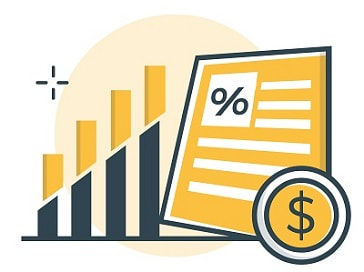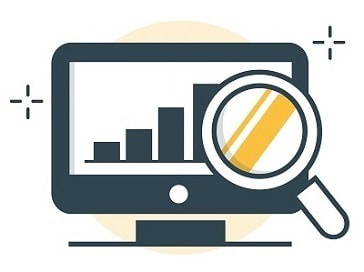UK Pension Transfer to New Zealand - The Definitive Guide
Our guide explains everything you need to know about UK to NZ pension transfers, including pros, cons, must-know considerations, tax obligations and identifies some of the New Zealand Superannuation Schemes that can receive a transfer value.
Updated 9 March 2024
Summary:
In this guide, we outline the general process for pension transfers from the UK to New Zealand. We cover:
Related Guide: What Am I Entitled to If My UK Pension Scheme or Provider Makes a Mistake?
- Pension transfers from the UK to New Zealand have been transacted for over 2 decades but there are many considerations before making a decision.
- As a general warning, the best approach is to proceed with extreme caution - there are many negative aspects of pension transfers and your decision is usually irreversible.
- Whilst having control of what can be a significant sum of money might be very tempting, there are a number of risks to your financial security that should be considered. There are specific processes and regulations you should know before transferring funds.
- It’s always best to consult with a pension expert before transferring funds. This is because of the complexities around the types of UK pension schemes, the UK’s expansive pension legislation and the terms and conditions that might apply to the pension scheme.
- Here in New Zealand there are numerous issues too including tax, which can adversely affect your pension balances and the type of Superannuation Scheme selected as well as taking on a number of risks that are borne by a previous employer or current insurance company.
In this guide, we outline the general process for pension transfers from the UK to New Zealand. We cover:
- Is It Legal To Transfer Pension Funds To New Zealand?
- Transferring Pension Funds From The UK To NZ - Five Things To Know
- Frequently Asked Questions
- How Do I Choose A QROPS, and Which One Is Best?
- Other Relevant Points To Consider Before Making a Final Decision
- UK To New Zealand Pension Transfers - Must-Know Facts
- Concluding Comments
Related Guide: What Am I Entitled to If My UK Pension Scheme or Provider Makes a Mistake?
Is It Legal To Transfer Pension Funds To New Zealand?
In short, yes, it is legal. But you must transfer the funds into a Qualifying Recognized Overseas Pension Scheme (QROPS). A QROPS is qualified if it’s a New Zealand Superannuation Scheme registered with UK HM Revenues & Customs (here is a link to New Zealand registered schemes), and the choice is yours as to which scheme you want to invest in. However KiwiSaver schemes cannot register as a QROPS.
There are a number of Superannuation Schemes operated by well-known investment managers. Examples include Booster, NZBritannia, Craigs, Kiwi Wealth and SuperLife.
There are a number of Superannuation Schemes operated by well-known investment managers. Examples include Booster, NZBritannia, Craigs, Kiwi Wealth and SuperLife.
Why is this important?
Transferring your pension as a 'recognized transfer' limits your tax liabilities upon transfer (in most cases). However any guarantees or promises within the UK scheme would be lost upon transfer to the QROPS scheme you select. In addition, with the demise of a variable annuity that was offered by NZ based Lifetime Investment Management, the only avenue to access an annuity is through your UK pension scheme. Whilst many advisers frown upon annuities they do offer a high degree of certainty in terms of only ceasing on death (no matter how long you live, and not being reliant upon investment returns.
Transferring Pension Funds From The UK To NZ - Five Things To Know
There are specific regulations for transferring funds from the UK to NZ, which we detail below:
Understand What Pensions you can TransferGenerally you may transfer most pensions but there are some circumstances that preclude a transfer that a UK pensions specialist will be able to identify for you.
Examples of UK pension schemes that might permit a transfer include:
Private pension schemes, which include:
|
There are tax considerationsTax regulations took effect in 2014 sought to bring about a level playing field between those who transfer their benefits to New Zealand and those who decide not to, and in fairness to the NZ tax office they are generally well devised. The regulations introduced a four-year transfer window. This starts the day you become a New Zealand tax resident. If you transfer your UK pension into a QROPS within this time, you won’t normally incur a New Zealand tax liability on the transfer. It also gives new migrants a chance to see if they can secure permanent residency before being faced with a major decision that for some is irrevocable.
After the first 4 years income tax will be assessed on the transfer value. There are two methods of calculating the liability. The taxable amount is assessed at your marginal rates of income tax. If you are transferring a defined benefit scheme you can only use the Schedule Method. If you are transferring other types of scheme you can use either calculation method that results in the lowest tax liability It’s important that you appreciate your QROPS scheme will incur tax liabilities each year on taxable investment returns and, typically, the liability will not be to dissimilar to the tax liability that would accrue under the schedule method. In addition the QROPS has management fees that will be deducted from your plan each year and your adviser may also make an annual charge to cover the cost of any on-going advice. The combined effect of these charges is likely to be considerably higher than the impact of tax and fees being deducted by your UK pension scheme (note there are no fees attaching to membership of a final salary scheme). There may be tax implications for other savings in New Zealand for the following 2 years, such as your KiwiSaver. UK pension schemes only pay tax on dividend income from their investment in shares; all other investment returns are tax-free. For that reason UK pension schemes only permit 25% of the ‘fund value’ to be taken as a tax free lump sum, the rest must be taken as a pension that is subject to income tax. Under the rules mentioned above, the receipt of a tax-free lump sum from a UK pension scheme would be subject to income tax in New Zealand. However due to the tax treaty that exists between the UK and New Zealand, your UK pension would only be subject to income tax here in New Zealand. This just requires a simple form to be completed to invoke the treaty terms and your adviser or tax professional should be able to help. Superannuation Schemes might operate as PIE schemes (like many KiwiSaver schemes), as variable rate PIE schemes or as Widely Held share schemes. The latter assesses all taxable gains to one uniform rate of 28% regardless of your personal tax situation. |
Understanding the UK Tax LiabilitiesIt’s best to use a pension expert when transferring your funds; one wrong move and you could lose a large portion of your retirement funds. While you'll need to transfer your money into a QROPS; UK regulations require you to obtain a pension report from a suitably qualified and authorised UK based financial adviser for all defined benefit schemes and personal plans that contain a Guaranteed Annuity Rate and/or a Guaranteed Minimum Pension (GMP) liability. Expect to pay up front for the report; typical costs will be several thousand pounds unless you are in ill health, or in serious financial hardship and over the Normal Minimum Pension Age, (NMPA); in these circumstances the UK regulator will allow the UK adviser to secure remuneration by way of a commission should the transfer to a New Zealand scheme proceed, in all other instances the UK regulator insists the adviser charges a fee for advice. As it that wasn’t enough complexity, there are other considerations to be aware of:
It is important to be aware that the UK tax office regards all money paid to you by a QROPS comes firstly from the amount that was (originally) transferred from the UK scheme. I.e. you cannot access any investment growth from the QROPS until such time as you have accessed all the money that was transferred from the UK. Any amount received from your QROPS that wouldn’t be allowed from a UK pension scheme is an ‘unauthorised payment‘ and may be subject to taxation. Despite living in New Zealand the tax treaty that exists between the two countries calls upon both nations to collect any tax liability from its citizens that are due to the other country. |
Know the Process to Transfer Your Pension from the UK to New ZealandYour New Zealand Adviser may have to secure a report from an appropriately licensed UK adviser if the transfer value of your UK plan (or the cumulative value of more than one plan) is £30,000 or more and your entitlement is held by:
Only specially licensed UK financial advisers can provide reports under 1 and 3 above. The UK adviser must provide a personal recommendation, which is based on the starting premise that a transfer is inappropriate unless on current evidence it is unquestionably clear that a transfer would be in an individual’s best interests. Defined Benefit Schemes should make you aware within 1 month of receiving your request for a transfer value if you will need to secure a UK report Defined Benefit Schemes have 3 months to issue you with a transfer value (referred to as a Cash Equivalent Transfer Value) The quotation generally has a 3 months expiry date by which time, if the recommendation is to transfer, all completed documentation required by the scheme must be returned The UK scheme then has a further 3 months to finalise any due diligence and make payment, but if they need more time to make enquiries this is generally permitted If you have a personal scheme there are no set timescales apart from returning specific documents that form part of a large package of forms within 60 days of the transfer value quotation date. As a result of the increase in Scams the UK Pension Regulator has increased its expectations on all pension providers (occupational and personal) to be vigilant, and make sufficient enquiries to satisfy themselves that the transfer of benefits isn’t an attempt by an individual to scam the pension plan member out of their retirement savings. You should therefore expect a large amount of information being required by the UK pension scheme. They will almost certainly insist on dealing with you directly rather than via your New Zealand adviser (because NZ financial advisers are not registered with the UK financial services regulator). It is quite likely that the time taken to finalise any transfer will be considerably longer than the timeline identified above. However there are limits on how much they can reasonably expect of you and there are some restrictions imposed by the provisions of the General Data Protection Regulations (GDPR) (Data Protection Act 2018). However, you will need to be patient. |
Important: Don't Be Reluctant to Seek Expert HelpTransferring your pension funds to New Zealand might be a good idea if you’re retiring in New Zealand, but make sure you know the regulations.
Transferring all of the types of schemes identified in point 4 comes with added risk, that’s why the UK financial services regulator imposes additional advice requirements. You (and your adviser) will need to consider additional factors including:
|
Frequently Asked Questions
What is the earliest age I can access my UK pension fund (Normal Minimum Pension Age)?
Currently 55, unless you are in ill health (meaning your health will not enable you to return to work again; this needs to be confirmed by your medical professional). However this will increase to 57 from 6th April 2028. The UK Government is currently working on provisions that might offer relief to those who will attain age 55 before 6th April but who would otherwise have to stop receiving benefits after April 2028 because they’re not yet 57. As yet those provisions are unknown.
Those individuals who were members of a UK pension Scheme or QROPS might still have access to their benefits at the ages of 55 or 56 if:
You may also retain the right to access at 55 or 56 if you transferred into a QROPS or UK pension scheme that meets the requirements above on or before 3rd November 2021 (or signed paperwork before 3rd November 2021. There is one other way one can access the earlier age, but the likelihood of the criteria being met on transfer to a QROPS is very remote so has been ignored for the purposes of this article.
If you already have a QROPS, check the investment statement or product disclosure document for coverage on this issue. If it makes mention of trustee approval to access benefits or mentions age 55, or any age set by the UK Government, you are caught by the new rules and will have to wait until you are 57 or in ill health preventing you from working ever again or suffering from an ill ness likely to result in death within the next 12 months.
Important: Be careful about transferring from a UK pension scheme where you have the right to take benefits from age 55 (or younger) as this right will now be lost on transfer to a QROPS.
Those individuals who were members of a UK pension Scheme or QROPS might still have access to their benefits at the ages of 55 or 56 if:
- You had money invested in a pension scheme on 3rd November 2021, and
- The rules of THAT pension scheme gave unqualified right to take your pension savings from an earlier age than 57. (What this means is you don’t need approval from the trustees or administrator of the pension scheme to take your benefits, and
- Those rules were in place on 11th February 2021
You may also retain the right to access at 55 or 56 if you transferred into a QROPS or UK pension scheme that meets the requirements above on or before 3rd November 2021 (or signed paperwork before 3rd November 2021. There is one other way one can access the earlier age, but the likelihood of the criteria being met on transfer to a QROPS is very remote so has been ignored for the purposes of this article.
If you already have a QROPS, check the investment statement or product disclosure document for coverage on this issue. If it makes mention of trustee approval to access benefits or mentions age 55, or any age set by the UK Government, you are caught by the new rules and will have to wait until you are 57 or in ill health preventing you from working ever again or suffering from an ill ness likely to result in death within the next 12 months.
Important: Be careful about transferring from a UK pension scheme where you have the right to take benefits from age 55 (or younger) as this right will now be lost on transfer to a QROPS.
Can I transfer my UK pension to New Zealand?
Yes, as long as you meet specific conditions:
- You are not already receiving income from most annuities purchased with your UK pension funds
- You aren’t receiving a pension from your defined benefit scheme or normally (but not always) you aren’t inside the final 364 days before the pension scheme’s normal retirement age; and
- Your pension is not a State Pension or an unfunded public sector pension scheme (e.g. NHS, Civil Service, Police and Fire Services)
Technically yes, but it would result in a tax penalty that would be deducted by the UK scheme. You might be able to reclaim the tax if you subsequently take up residency in New Zealand. But you will have lost out on potential investment returns on the money and the exchange rate of £ for $ is likely to be different.
How long does it take for UK pension funds to be transferred to New Zealand?
While there are no guidelines, and every scheme is different, you can expect any time between one and nine months (defined benefit schemes generally take the longest). Once the money is received in New Zealand, your investment scheme should issue you with confirmation of the amount received and details of the investment bought with the money.
How can I withdraw money from my QROPS account?
Once you reach NMPA, you can receive the money requested from your QROPS account (as a one-off payment, as a regular income or as a combination of both). You can have an early entitlement to your money if you are , retiring early due to ill health.
Will I pay fees to transfer my UK pension to New Zealand?
Yes and No. It depends on how you initiate the transaction and who the QROPS manager is. While you will almost certainly pay on-going management fees to the QROPS administrator and perhaps investment fees to the funds management group, there may also be a one-off advisor fee and/or on-going service fee for handling the transfer and providing advice. To know what you’ll pay, ask upfront about the potential fees that will be charged to transfer the money and provide on-going investment advice (including how much it is sensible to spend each year throughout retirement without spending all your QROPS fund whilst you are still relying on it to provide you with income).
If you need a report from a UK adviser, expect to pay a fee upfront for their report unless you are in serious ill health or in severe financial difficulties and over NMPA
If you need a report from a UK adviser, expect to pay a fee upfront for their report unless you are in serious ill health or in severe financial difficulties and over NMPA
What happens if I transfer to an overseas scheme that is not a QROPS?
Generally, if you transfer to an overseas pension that it not a QROPS, the transfer will be seen as an 'unauthorised payment' which can incur a tax charge of up to 55%, in addition to other potential penalties. Never move your pension fund without full consideration - many scams exist in the UK and people have lost their pension balances and found themselves with tax bills to pay for the unauthorised payment they initially received. Pension schemes and insurance companies will undertake due diligence to try and eradicate this risk, but scammers can be very clever with documentation and when answering questions
How Do I Choose A QROPS, and Which One Is Best?
There are many options when it comes to recognised overseas pension schemes. Generally, the best approach to find the most suitable is to consider the following:
Step 1: Understand the Investment options - is the fund growth-focused (the riskiest, as they invest in shares), balanced funds (mixing share investments with less risky term deposits and cash etc.) or conservative (even lower risk, with usually around 80% of the money invested in bank deposits and fixed-interest bonds). Do they offer specific investment fund options, such as funds invested with an ESG remit, global equities, Australasian equities for example where you can chose your own investment mix; do they offer passive or active funds management, perhaps they offer both?
Step 2: Understand whether the scheme is taxed under the PIE, Variable Rate PIE or Widely Held Share scheme tax rules- if it’s a PIE scheme the fund will be taxed using your PIR. If Variable Rate you could qualify for a 0% tax rate for a period of time. If Widely Held then regardless of your PIR or personal marginal income tax band the taxable returns will be taxed at 28%. In all cases permitted fees incurred can be offset against the tax liability
Step 3: Understand what happens to your money when it arrives- If the QROPS only offers $ denominated investments then your money will be converted on the day it arrives. Meaning it’s a single transaction that in hindsight could turn out to be good, bad or just indifferent. If the scheme offers both £ Sterling and $ denominated investments it will be up to you decide which currency you invest in. If you are using a financial adviser they will be able to provide advice on this matter, but bear in mind the £Sterling and $ cross is one of Sterling’s most volatile pairings
Step 4: Understand the fees - all QROPS funds charge management fees, usually in a dollar amount and/or a percentage of your investment’s value. Either way, the lower the fees, the better off you’ll be in retirement (if returns are equal among providers).
Step 5: Evaluate the Performance - you can only compare funds in the same categories; for example, it’s pointless to compare the performance of a growth fund with a conservative fund – they invest in entirely different things. To get an idea of the best-performing funds, shortlist some funds and ask for the most recent financial results (or look online). But extreme care needs to be taken, there may be reasons why one fund has outperformed another, perhaps the fund took an aggressive stance with its allocation to growth investments that paid off over the period. Regardless past performance is no guarantee of future performance and the value of units in an investment fund can fall as well as rise and isn’t guaranteed. This is where a financial adviser can add real value
Step 6: Quiz the adviser. How much do they actually know about UK pensions? Merely transferring money for X years for other clients doesn’t necessarily imply any knowledge, just form filling ability. Remember this may well be an irrevocable decision.
Step 1: Understand the Investment options - is the fund growth-focused (the riskiest, as they invest in shares), balanced funds (mixing share investments with less risky term deposits and cash etc.) or conservative (even lower risk, with usually around 80% of the money invested in bank deposits and fixed-interest bonds). Do they offer specific investment fund options, such as funds invested with an ESG remit, global equities, Australasian equities for example where you can chose your own investment mix; do they offer passive or active funds management, perhaps they offer both?
Step 2: Understand whether the scheme is taxed under the PIE, Variable Rate PIE or Widely Held Share scheme tax rules- if it’s a PIE scheme the fund will be taxed using your PIR. If Variable Rate you could qualify for a 0% tax rate for a period of time. If Widely Held then regardless of your PIR or personal marginal income tax band the taxable returns will be taxed at 28%. In all cases permitted fees incurred can be offset against the tax liability
Step 3: Understand what happens to your money when it arrives- If the QROPS only offers $ denominated investments then your money will be converted on the day it arrives. Meaning it’s a single transaction that in hindsight could turn out to be good, bad or just indifferent. If the scheme offers both £ Sterling and $ denominated investments it will be up to you decide which currency you invest in. If you are using a financial adviser they will be able to provide advice on this matter, but bear in mind the £Sterling and $ cross is one of Sterling’s most volatile pairings
Step 4: Understand the fees - all QROPS funds charge management fees, usually in a dollar amount and/or a percentage of your investment’s value. Either way, the lower the fees, the better off you’ll be in retirement (if returns are equal among providers).
Step 5: Evaluate the Performance - you can only compare funds in the same categories; for example, it’s pointless to compare the performance of a growth fund with a conservative fund – they invest in entirely different things. To get an idea of the best-performing funds, shortlist some funds and ask for the most recent financial results (or look online). But extreme care needs to be taken, there may be reasons why one fund has outperformed another, perhaps the fund took an aggressive stance with its allocation to growth investments that paid off over the period. Regardless past performance is no guarantee of future performance and the value of units in an investment fund can fall as well as rise and isn’t guaranteed. This is where a financial adviser can add real value
Step 6: Quiz the adviser. How much do they actually know about UK pensions? Merely transferring money for X years for other clients doesn’t necessarily imply any knowledge, just form filling ability. Remember this may well be an irrevocable decision.
Other Relevant Points To Consider Before Making a Final Decision
- Transferring your UK pension isn’t as straightforward as it seems, and there’s a lot to consider. You may even decide the best option for your circumstances is not to transfer your pension even after moving to New Zealand
- If it isn’t right to transfer the benefits this year, that shouldn’t be the end of the issue, it is worthwhile reconsidering every year because individual circumstances change
- We’ve itemised six must-know facts below to help you navigate the process while being better informed.
- Whatever you decide, there will be advantages and disadvantages, and in many cases, it’s a significant financial decision. For this reason, it’s important to consider taking expert financial and tax advice.
- The UK has extensive protection for consumers ranging from requiring financial advisers to hold insurance to reimburse clients where they have erred and the error has caused financial loss, to the Financial Services Compensation Scheme which offers cover of up to £85,000 per investment or 100% of any annuity instalments if a provider goes bankrupt, and the Pension Protection Fund which offers very significant protection to members of defined benefit schemes whose employer has ceased trading and there are insufficient assets in the pension fund to meet everyone’s accrued entitlement. The UK also offers access to two ombudsman services, who can make financial awards and even order a pension scheme to reinstate your benefits if their due diligence is deemed inadequate and you are scammed out of your pension fund. New Zealand currently has few protections.
UK To New Zealand Pension Transfers - Must-Know Facts
Transferring the pension could mean you relinquish other benefitsSome UK pension schemes provide additional features such as spouse and/ or dependent pensions, inflation-linked increases and other benefits such as a funeral expenses grants. If you transfer the money to New Zealand these add-ons will be lost.
|
Exchange rates significantly affect the amount of money you’ll receiveWith the effects of BREXIT and the relatively strong NZD:GBP exchange rate, you may transfer your pension balance when it’s less favourable to do so. For example, a £50,000 pension balance is worth $100,000 with a 0.50 NZD:GBP rate, but at 0.40 the balance jumps to $125,000.
|
Pension terms and benefits vary between New Zealand and the UKThe UK is very pension benefit-focused, which can be financially rewarding to many people in their retirement. Your expected annual pension in the UK may be significantly more than what you’ll receive in New Zealand. In such cases, you may be in a worse financial situation by transferring to New Zealand.
|
Once you transfer, you’ll give up your UK pension benefitsIf you transfer your UK pension you’ll give up on attractive terms and conditions like guaranteed annuity rates (they aren’t offered any more). If you transfer your Defined Benefit Scheme a previous employer won’t allow you to reinstate them, even if you return to the UK. A new employer is unlikely to offer access to membership of a defined benefit scheme. Even in circumstance where they do (such as NHS, Teachers and police service) they usually offer a fixed pension at retirement based on the value in your QROPS fund. It’s highly unlikely the fixed pension will be anywhere near the level of annual pension transferred to New Zealand in the first place, because the original transfer value was a discounted value of the true benefits and tax and charges will have been deducted each year.
|
There are tax implications if you decide to transferTransferring pension(s) from the UK to New Zealand can have tax implications. To ensure you’re aware of the liability and when it must be paid, it’s best to consider taking specialist financial and tax advice. If you aren’t entitled to any benefits from the transferred fund you will (currently) have to meet the liability from your own funds. Of course that could change in the future if New Zealand decides to change its tax rules relating to overseas pension/superannuation transfers.
|
You don’t have to transfer your pension if you leave the UKIf you move to New Zealand, you don’t have to transfer your UK pension. You are able to leave the pension in the UK and draw down on the benefits when you're eligible to. You can manage currency risk (just in case the New Zealand Dollar gains in value against the British Pound) many Foreign Exchange currency dealers will offer a contract offering a fixed exchange rate for the following 12 months which you can accept or decline (for now); in addition they tend to charge considerably less in bank costs to transfer money from the UK to your NZ bank account.
The UK online Pensions Dashboard will start offering details of your UK pension scheme via a secure online portal. This will eventually include all occupational and personal pension schemes as well as your state pension entitlement. You’ll no longer have the worry of keeping in touch with UK pension schemes or trying to track down each of your pension benefits at a later date, removing a possible reason to transfer to a QROPS. |
Concluding Comments
- Transferring a UK pension to New Zealand is not straightforward and the decision-making process should not be rushed.
- UK personal pension plans are generally considerably cheaper to run than NZ Superannuation Schemes. The sponsoring employer meets all costs incurred in providing a pension from defined benefit scheme (except bank costs associated with paying the pension to you).
- If your situation is complicated, and/or if you feel like you need an expert opinion, New Zealand companies such as Booster, NZBritannia, Craigs, Kiwi Wealth and SuperLife all offer specified UK pension transfer advice. We have no relationship with these companies and link them as examples only.



















